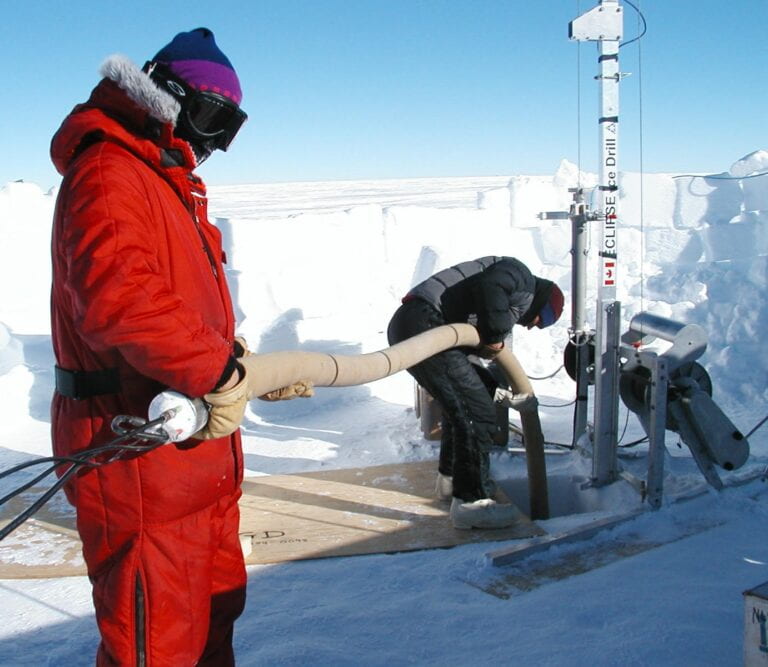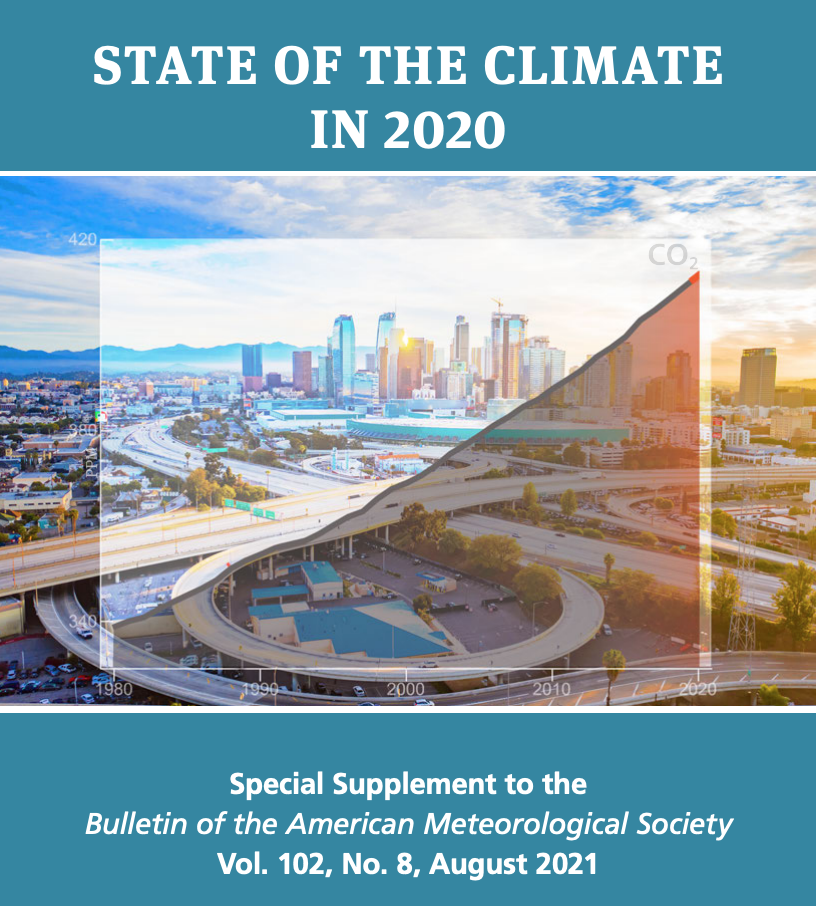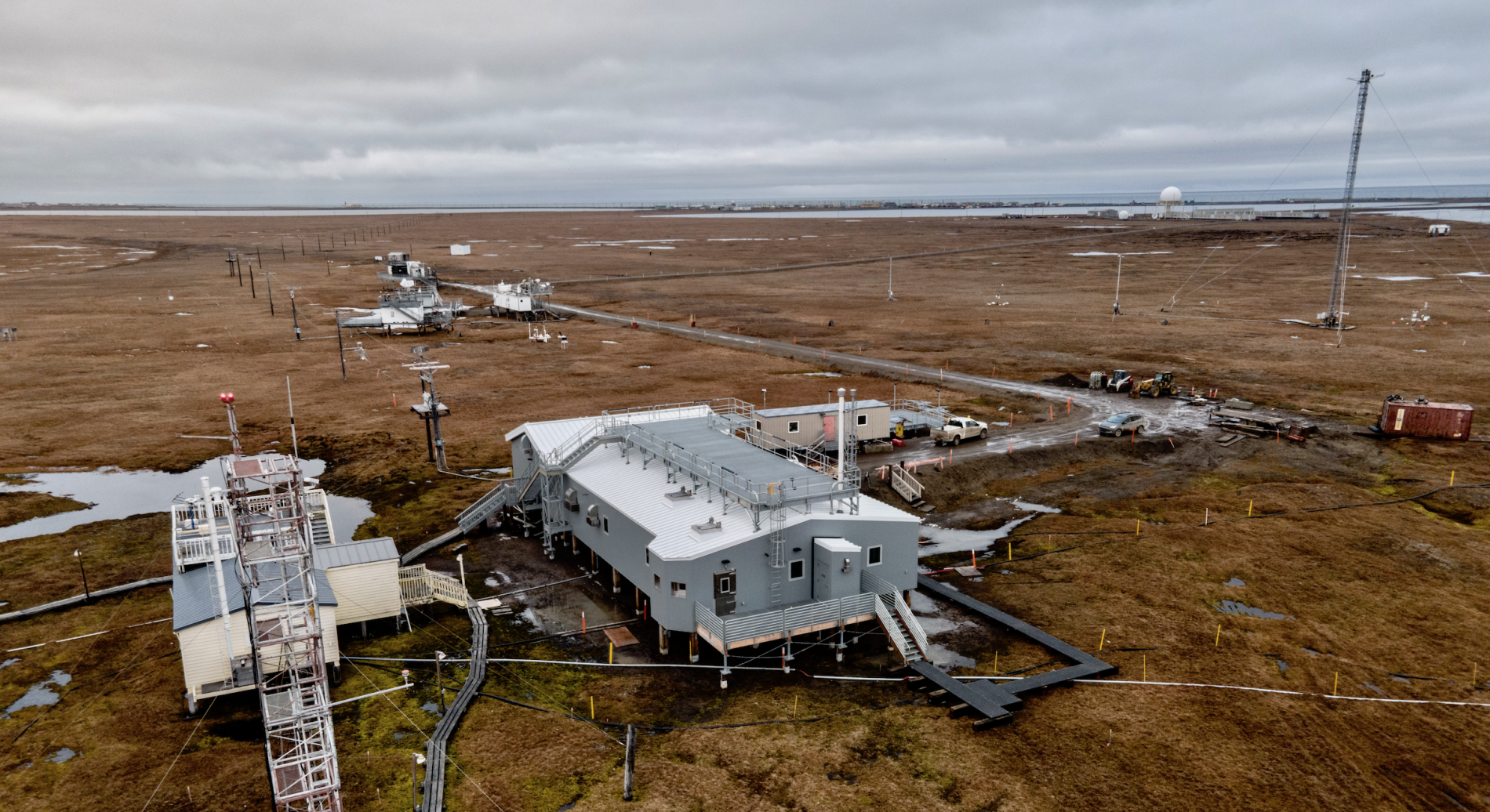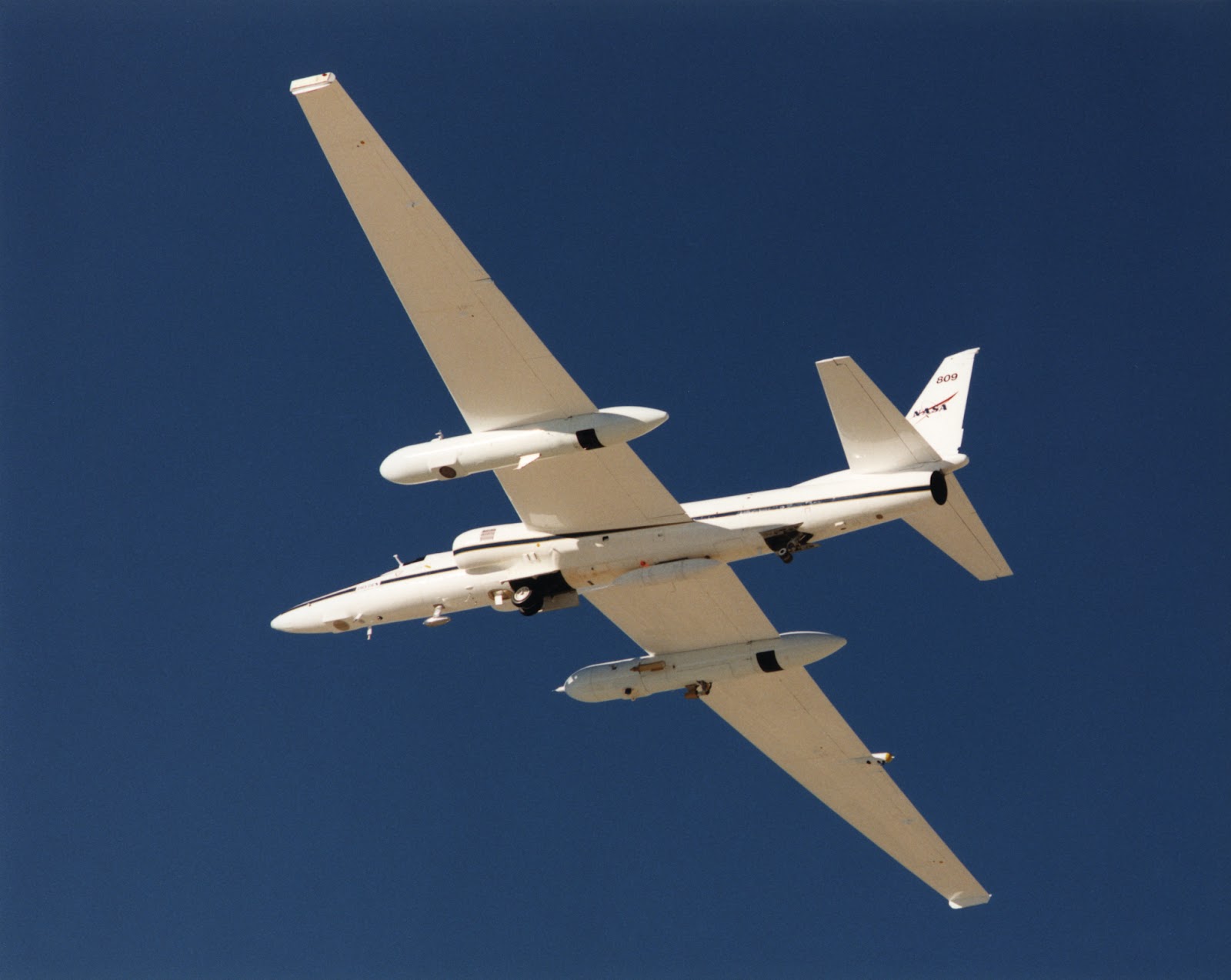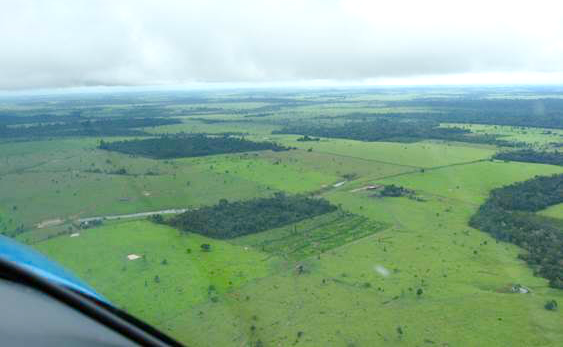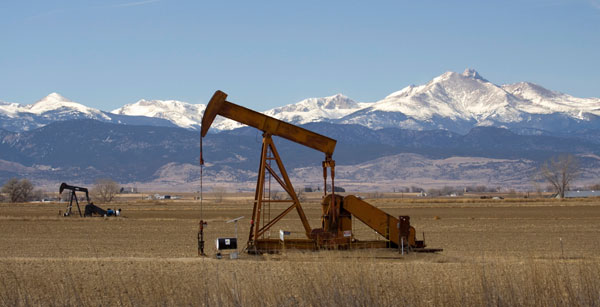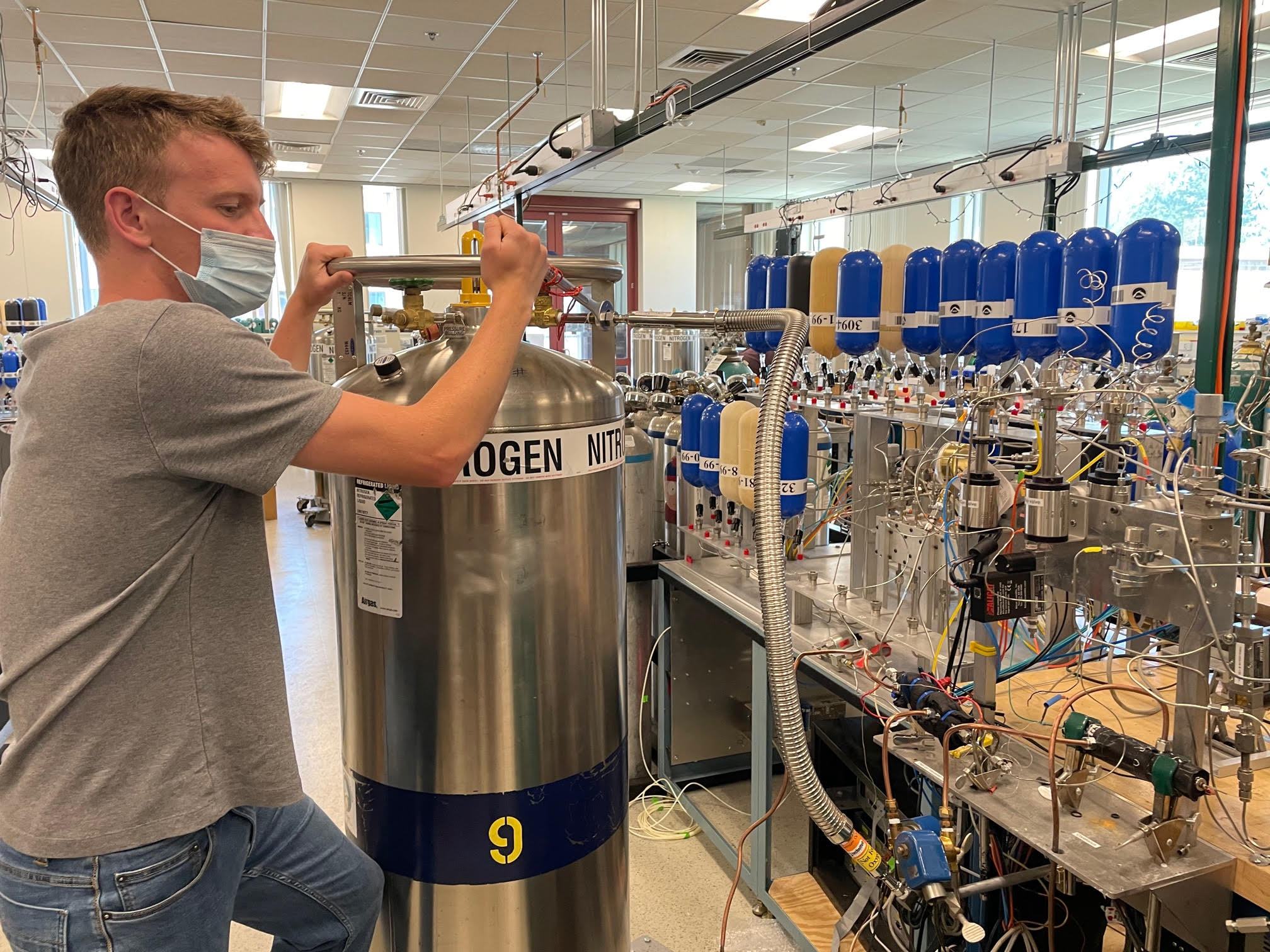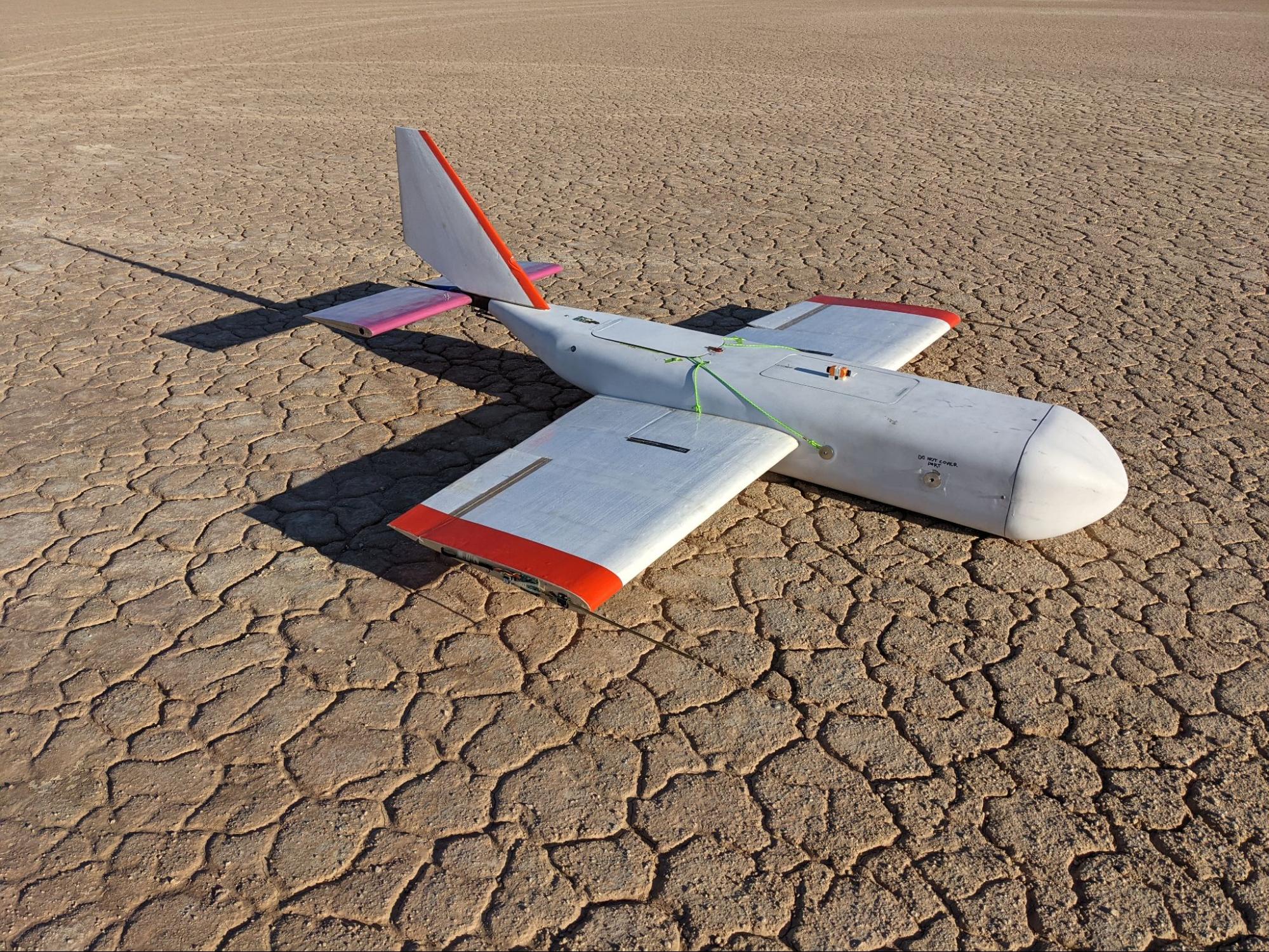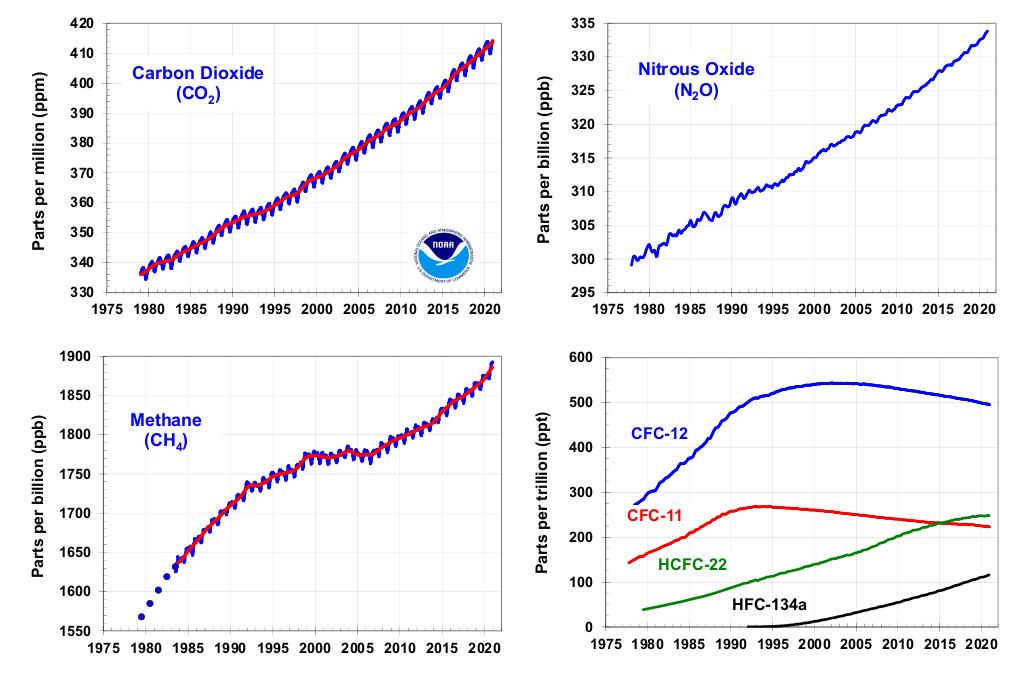News

September 10, 2021
UCI researchers analyzed Antarctic air samples to learn of a 70-percent increase in atmospheric hydrogen over the past 150 years
NOAA Scientists contributed to a study by UCI researchers of air trapped in compacted layers of Antarctic ice and snow to come up with some answers and a few new questions about the amount of molecular hydrogen in our planet’s atmosphere.September 9, 2021
First Annual Report Highlights Links Between Air Quality and Climate Change
Two CIRES scientists working in NOAA laboratories contributed to the WMO’s first-ever Air Quality and Climate Bulletin, released on September 3.September 1, 2021
Highlights of GML’s contributions to the 2020 BAMS State of the Climate Report
Scientists from Global Monitoring Laboratory contributed to the Bulletin of American Meteorological Society State of the Climate 2020 report report as editors and authors.August 16, 2021
A new way to measure how Arctic plant communities respond to climate change
Modeling using atmospheric measurements of carbonyl sulfide (COS) was used for quantifying photosynthetic CO2 uptake in the Arctic and Boreal ecosystems.July 20, 2021
NOAA-NASA collaboration to study the impact of convective storms and the North American Summer Monsoon on stratospheric chemistry
Global Monitoring Laboratory and NASA team up in the DCOTSS (Dynamics and Chemistry of the Summer Stratosphere) project to study the convective impact of the North American Monsoon Anticyclone on stratospheric composition and ozone depletion.July 14, 2021
Deforestation, warming flip part of Amazon forest from carbon sink to source
New results from a nine-year research project in the eastern Amazon rainforest finds that significant deforestation in eastern and southeastern Brazil has been associated with a long-term decrease in rainfall and increase in temperature during the dry season, turning what was once a forest that absorbed carbon dioxide into a source of planet-warming carbon dioxide emissions.June 25, 2021
New research suggests no significant reduction in total oil and natural gas emissions from 2008 to 2016 in Weld County, Colorado
New research suggests no evident reduction in total oil and natural gas emissions and their contribution to the regional air quality from 2008 to 2016 in Weld County, in Northeastern Colorado.June 21, 2021
Remote monitoring towers provide data that advance the understanding of boreal forest fires
Boreal forest fires influence the global carbon cycle and climate system by consuming aboveground and underground biomass and directly releasing carbon dioxide, other trace gases, and aerosols into the atmosphere. A new study with GML co-authors quantified emission factors of carbon monoxide and methane using ground-based observations from the Carbon in Arctic Reservoirs Vulnerability Experiment (CRV) tower in Alaska.June 17, 2021
New analysis shows microbial sources fueling rise of atmospheric methane
The sudden and sustained rise in atmospheric levels of the potent greenhouse gas methane since 2007 has posed one of the most significant and pressing questions in climate research. A research team led by CIRES and NOAA scientists has tested the leading theories for surging methane levels by analyzing the stable carbon isotope ratios (δ13C-CH4) from methane captured in a large set of global air samples.June 7, 2021
Carbon dioxide peaks near 420 parts per million at Mauna Loa observatory
Atmospheric carbon dioxide measured at NOAA’s Mauna Loa Atmospheric Baseline Observatory peaked for 2021 in May at a monthly average of 419 parts per million (ppm), the highest level since accurate measurements began 63 years ago, scientists from NOAA and Scripps Institution of Oceanography at the University of California San Diego announced today.June 4, 2021
GML scientists successfully test high-altitude return glider with the AirCore science package
Global Monitoring Laboratory (GML) and Cooperative Institute for Research in Environmental Sciences (CIRES) scientists successfully tested a new method for high-altitude air sampling and instrument recovery from May 13-25, 2021.June 3, 2021
NOAA, Boeing team up to test greenhouse gas-measuring technology
NOAA and Boeing are teaming up to evaluate the best placement for a NOAA greenhouse gas sampling system on a commercial jet by testing options on a new Boeing 737 as part of Boeing’s 2021 ecoDemonstrator flying test bed program.May 24, 2021
NOAA index tracks how greenhouse gas pollution amplified global warming in 2020
Extra heat trapped in the atmosphere by human-caused greenhouse gas pollution continued to exacerbate global warming in 2020May 23, 2021
NOAA’s Global Monitoring Laboratory Testing High-Altitude Operational Returning Unmanned System at NASA’s Armstrong Flight Research Center and Edwards Air Force Base
Global Monitoring Laboratory (GML) and Cooperative Institute for Research in Environmental Sciences (CIRES) scientists are launching a new AirCore field campaign to test a new method for high-altitude air sampling and instrument recovery.April 20, 2021
5 ways NOAA scientists are answering big questions about climate change
Scientists at NOAA have long worked to track, understand and predict how climate change is progressing and impacting ecosystems, communities and economies. This Earth Day, take a look at five ways scientists are studying this far-reaching global trend.

